Situated at 8 Victoria
Square, this is not perhaps the most
"historical" sign on this website (the 'phone number gives that away),
but it's certainly seen better days. The lettering sits on a large
white-painted rectangle of brickwork. Perhaps some stone-throwers or
even basketball shooters have been practising their craft against the
middle section.
Crossing the swing bridge (an intriguing sight
when it's opening) over the river Esk which
divides Whitby we find our way through the throngs of tourists and
candle shops to the White Horse & Griffin Hotel in Church Street.
This 320 year old building must have one of the narrowest street
frontages we've ever seen for an ancient coaching inn. What draws the
eye of the historic lettering spotter is on the bare wood lintel above
the coach entrance:
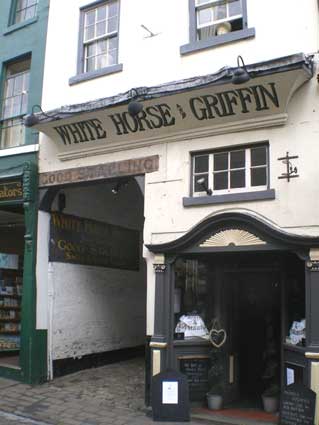
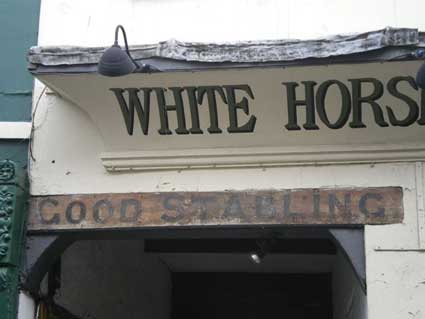
On the left side wall beneath this - just
visible on
the first photograph - is the sign in yellow paint on grey-painted
rendered stone:
'WHITE HORSE HOTEL
FULLY LICENSED.
GOOD STABLING.
SMOKE & CLUB ROOM' [followed by a pointing hand]
This sign is rendered in
an exuberant large and small caps letterform, but you can see from the
word 'ENTRANCE(?)' which runs behind the words "GOOD' and 'SMOKE' that
it is painted on earlier lettering.
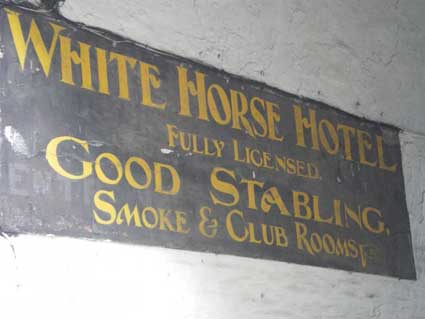
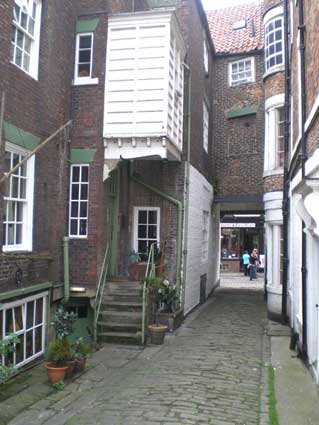
Accross Church Street
from the White Horse is one of those enigmatic painted advertisement
walls on the side of what once was a tobacconist's shop which certainly
shows the 'Players Please' cigarette slogan in its once familar
letterform with a circle below it. Any other lettering is lost.
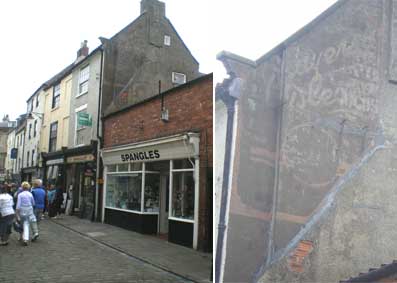 Follow your nose back towards the bridge and you might
stumble accross the Captain Cook Memorial Museum in the tiny Grape
Lane.
This building has the characters:
Follow your nose back towards the bridge and you might
stumble accross the Captain Cook Memorial Museum in the tiny Grape
Lane.
This building has the characters:
'.D.
M:S
16.88.'
on a raised tablet on
the fascade of the building, though we don't know what the initials
stand for.
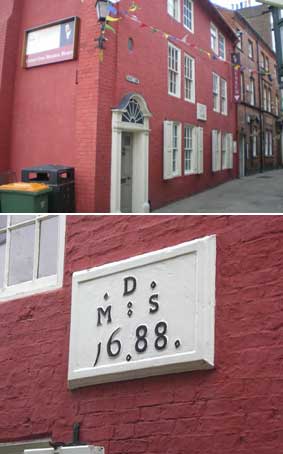 Opposite the famous craft
bakery E Botham & Sons Ltd 35-39, Skinner
St is this attractive shopfront currently of Clarkes of Whitby, an off
licence. It was once a more comprehensive grocers:
Opposite the famous craft
bakery E Botham & Sons Ltd 35-39, Skinner
St is this attractive shopfront currently of Clarkes of Whitby, an off
licence. It was once a more comprehensive grocers:
'PROVISIONS ... GROCERIES'
These very low-lying
ceramic tiles panels of bottle green have decorative borders and an
fine font. They compare with the 'J.Storr' ceramic lettering in a
similar situation which is shown at the top of this page.
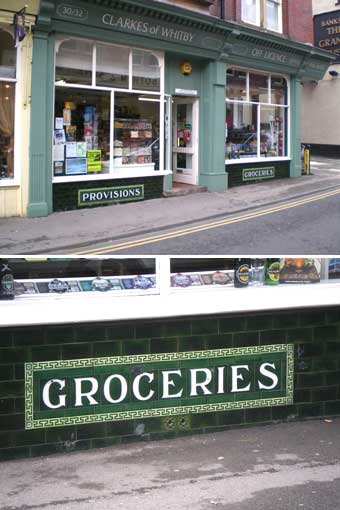
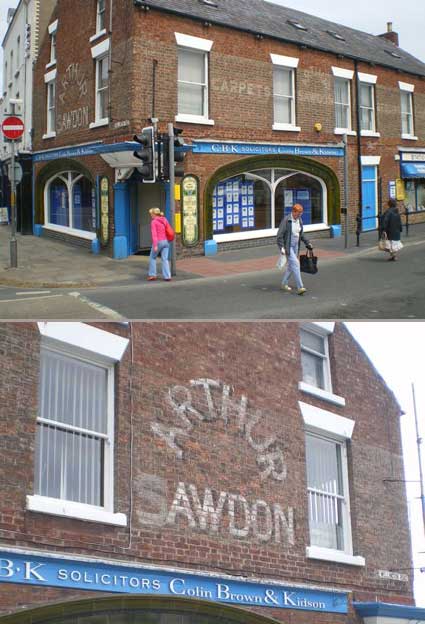
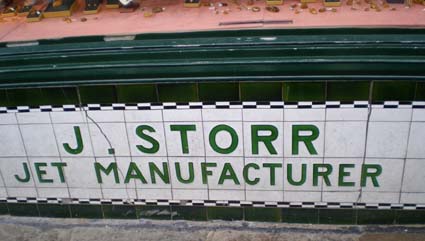 [Photograph
courtesy Richard Attenborrow.]
[Photograph
courtesy Richard Attenborrow.]
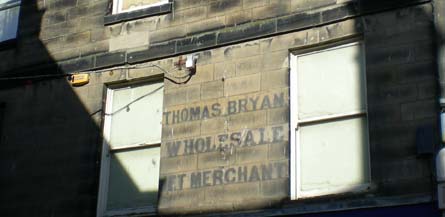 [Photograph
courtesy Richard Attenborrow.]
[Photograph
courtesy Richard Attenborrow.]
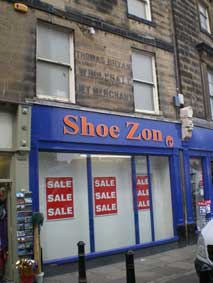 The Thomas Bryan sign in
situ above an abandoned shoe shop in Baxtergate, summer 2010.
The Thomas Bryan sign in
situ above an abandoned shoe shop in Baxtergate, summer 2010.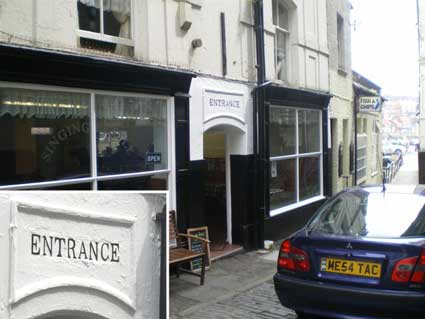
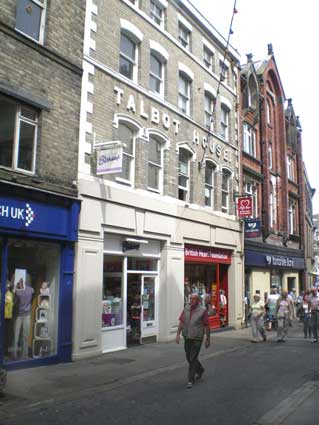
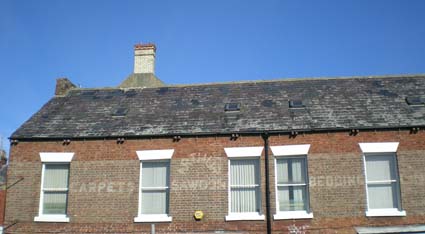 [Photograph
courtesy Richard Attenborrow.]
[Photograph
courtesy Richard Attenborrow.]
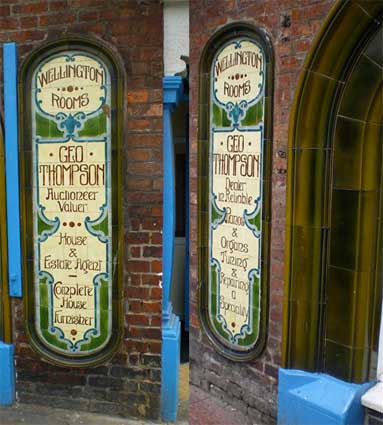

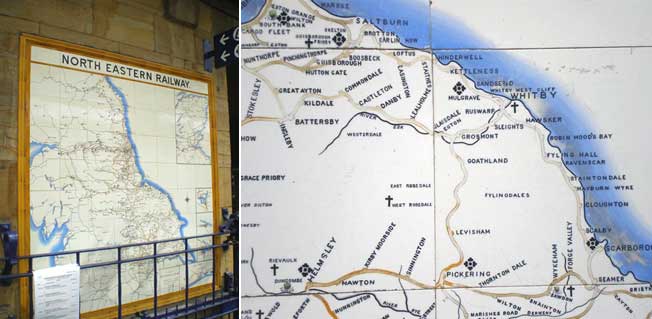
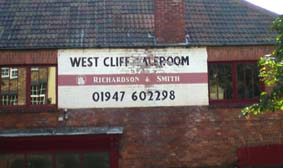 [Photograph
courtesy Richard Attenborrow.]
[Photograph
courtesy Richard Attenborrow.]







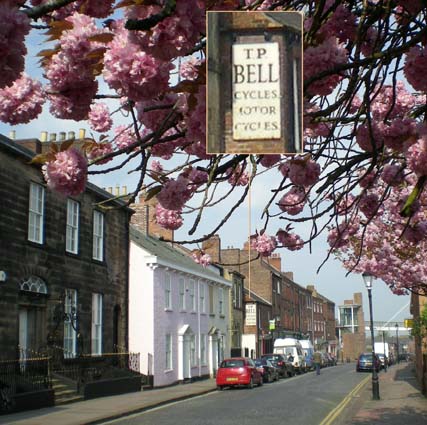 [Photograph
courtesy Richard Attenborrow.]
[Photograph
courtesy Richard Attenborrow.]